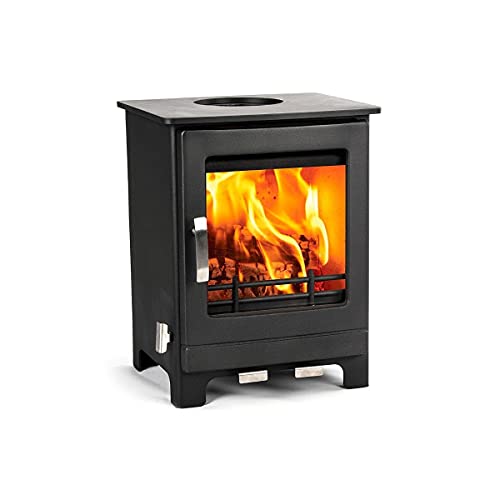Multi Fuel Boiler Stove
Multi fuel boiler stoves are designed to burn a range of wood, smokeless fuel and coal. They can also be connected up' to your existing heating system to help you save money.
When burning coal, the grate has to be removed to allow air to enter the fire from below. Some multi fuel stoves feature a grate that rumbles and an asphan to aid in this.
Energy Efficiency
Multi fuel stoves burn a variety of solid fuels, including peat, turf briquettes and smokeless coal. They can also burn logs. They are more versatile than stoves that burn wood because they can be used with a range of fuels.
Most modern Ecodesign-compliant stoves are rated at 80percent or more overall efficiency. They can help meet the SAP energy requirements through the production of low CO2 emissions. In the UK most homes use a wood-burning multifuel stove to warm the living space and a central heating system as the primary source of heating. It is usually complemented with a secondary heating system like an air or a convection hot-water stove.
The efficiency of the stove is crucial as it determines how much heat is delivered to your home. It should not be confused with the efficiency of combustion which is the figure quoted on the side of a stove. The combustion efficiency is an indication of how efficient a stove was during a test in the laboratory. It is not a reflection of the effectiveness of the entire system comprising chimney, fuel and stove.
In their marketing materials, stove makers often use the efficiency of combustion instead of System Efficiency. This is misleading. System Efficiency is not a measurement of the performance of the stove in a lab test. It is a calculation that takes into account the emissivities total of the stove and fuel in a home.

Note that the TE of a certain fuel/stove combination depends on the amount of volatile matter present in the solid fuel, since this will determine whether particulate-bound pollution (e.g. PM2.5, EC, and BaPeq) PM2.5, EC, and BaPeq pollutants ) are released by the fuel during ignition or are retained at the pyrolysis phase. If the volatile matter is retained during the pyrolysis stage, it releases carbonaceous aerosols that are not effectively bound and hence contribute to total emissivities.
Low Maintenance
Non-catalytic stoves need less maintenance and are more user-friendly than catalytic stoves. They are less expensive and feature a pre-heated combustion air system to improve the performance of the stove. They can burn a wide range of solid fuels including smokeless coal. They come with an adjustable primary air control that allows you to control the rate of the fire burning. This allows you to create an efficient fire, with more evenly distributed flames and less emissions.
You will need to refill your stove every 10-14 hours, based on the way you use it. It is also necessary to empty the ash pan frequently. If you use smokeless coal then the ash must be swept away to prevent it from blocking the air passages for combustion and thereby denying the fuel oxygen. This can be accomplished with the simplest tool that looks like pitchforks.
BTU ratings, which measure the amount of heat needed to boil one liter of water is a good indicator of how powerful a multi fuel boiler stove is. However, they shouldn't be the only spec you look at when making comparisons between models. Other factors, like the size and weight of the burner, can have an impact on performance.
Modern multi-fuel stoves can use many different liquid fuels including white gas, kerosene and isobutane. This makes them ideal for backpacking trips, particularly in remote areas where canister fuel might not be available.
Multi-fuel liquid-fuel stoves usually come with a regulator that helps you control the amount of fuel you use. They are also more efficient than stoves with canister fuel and are able to operate in cold temperatures as well as at high altitudes.
Certain multi-fuel stoves can be used with wood. This allows you to become more independent by reducing your dependency on purchased fuel. But, it's important to note that using a multi-fuel stove with wood could result in more harmful emissions and isn't recommended unless you've taken the appropriate precautions in place.
Thermostat Control
When it comes to multi-fuel stoves, a boiler stove is a great choice for those who wish the stove to heat their water and their room. The boiler stove is able to do this by heating the hot water tank inside the stove itself, or it may be connected to a conventional central heating system to boost its energy output. The capability to burn various solid fuels is another reason why these kinds of stove can be used in smoke-controlled areas which makes them an ideal option for homes in urban areas.
Most modern stoves can provide thermostat controls that allow the user to adjust the amount of fuel being burned, which then regulates the amount of heat generated. This feature can help save money by ensuring that the highest amount of heat can be generated from each fuel piece.
Boiler stoves are able to be used with a variety of fuel types, such as peat, wood and smokeless coal. Coal is able to produce a lot more heat than wood, which is the reason the majority of multifuel stoves are designed to allow you to choose from multiple fuel options in the making of the fire. multi stove is due to the fact that different types of fuel require slightly different airflows for proper combustion.
Smokeless coal for example, requires combustion air from below, and the majority of multi fuel stoves feature an open or partially open riddling grate that can let air flow through. This grate should be riddled often to avoid the accumulation of ash, which could block the flow of air and cause the fire to die.
All multifuel stoves are able to transfer some of the heat they generate into an ordinary water heater, regardless of whether they're boiler stoves or not. The amount of hot water that a stove can offer will differ depending on the model. In general, they can provide power to up to eight standard radiators. Some models, like the Stovax View 8 are able to achieve this feat with a heat output of up 4.9kW for the room and 8.2kW for the boiler. This will be enough to heat the majority of domestic radiators.
Smoke-Controlled Areas: Suitable for this product
Multi fuel stoves are a fantastic choice for people who live in areas with smoke control since they can be used to burn a variety of non-smoking fuels. You will save time and money by not needing to carry or store briquettes or logs that aren't always available. Multi-fuel stoves are more modern-looking than open-fire stoves and offer a greater variety of sizes to suit homes with various styles of interiors.
These kinds of stoves are called DEFRA Exempt or approved solid fuel appliances and are tested to ensure that they meet strict emission standards particularly when burning smokeless fuels. They are the best option if you live in an urban area where there is a high concentration of smoke-producing buildings, as they can help reduce the amount of black smoke generated by your heating system.
A DEFRA approved stove can be used with a wide variety of solid fuels, including anthracite and smokeless briquettes. Certain fuels cannot be burned in any way, and it's illegal to use them unless you have a certificate of smoke control.
Based on the model, this type of stove can be adapted for gas or oil sealed heating systems, or even underfloor heating. Depending on the model, they might also be able to be 'linked' to solar panels or renewable energy sources.
A multi-fuel boiler stove will usually have windows that allow you to see the flame and the flue through which combustion gases are drawn and ejected from the appliance. It also has an open fire grate which you can place your fuel and the air supply to the flames is controlled via an adjustable slider located at the bottom of the stove door. Certain models come with a secondary air flow system that introduces pre-heated secondary air or tertiary into the combustion chamber above the fuelbed. This reduces emissions by burning off any unburnt hydrocarbons within the smoke before it vents upwards into the chimney system.
